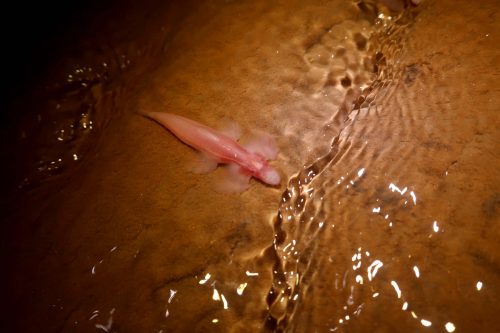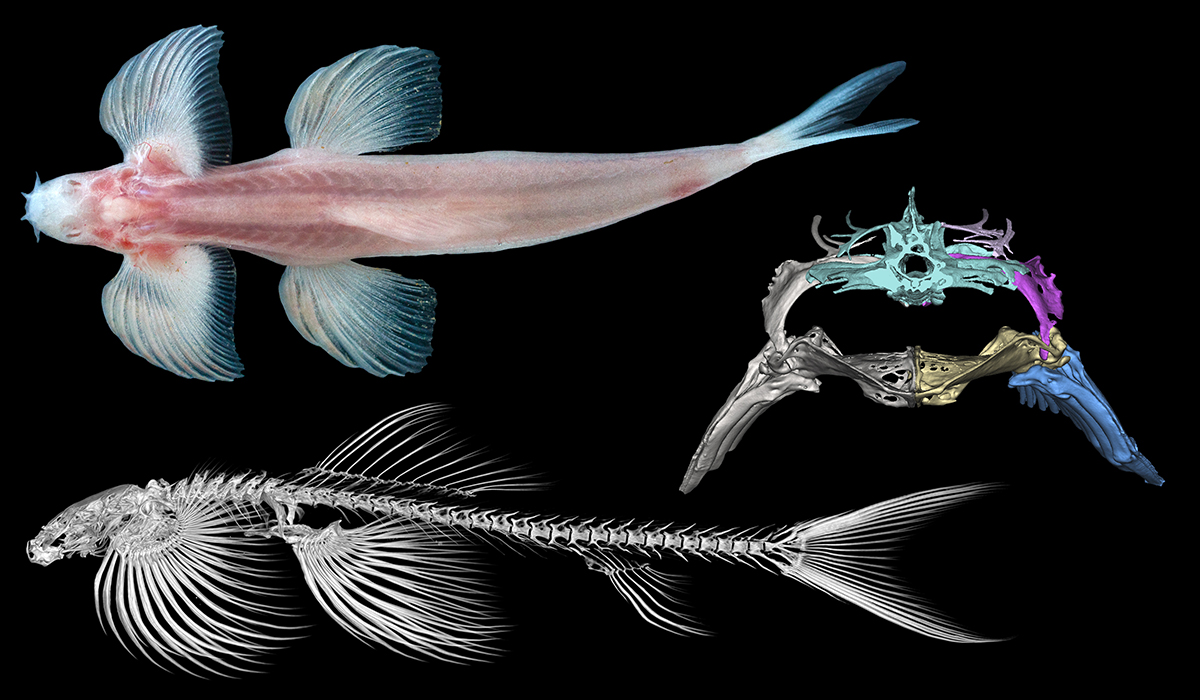At first glance, the Cave Angelfish, Cryptotora thamicola, doesn’t seem that different from other cave fishes. It’s blind, it lives in caves, and it only grows to about an inch and a half long at adulthood. You certainly wouldn’t expect it to be able to climb up waterfalls.
How does this small pinkish fish manage to walk on land the same way that salamanders do?

The answer has to do with convergent evolution, or the occurrence of the same or extremely similar physical adaptations in independent lineages from the Tree of Life, like the evolution of wings in insects, birds, and bats. The Cave Angelfish’s robust pelvic girdle is living evidence of the evolutionary stepping-stones that led to the development of fins into limbs and enabled the first vertebrates to walk on land. Early terrestrial life paved the way for the development of the extensive diversity seen in today’s tetrapods: land mammals, amphibians, birds, and reptiles.

Fossil records documenting the transition from water to land are scarce, and extant (living) fishes were thought to be missing the morphological features necessary for studying the origin of four-legged walking. However, the recent discovery of this blind cavefish offers a rare glimpse into how fishes were able to transition to a terrestrial lifestyle and evolve into tetrapods.
National Science Foundation-funded researchers from the University of Florida, New Jersey Institute of Technology, and Louisiana State University are working to identify the genomic, physical, and mechanical qualities that enable a fish to walk on land by examining the phylogenomic relationships, morphology, biomechanics, and walking performance from an evolutionary perspective among the Cave Angelfish and other members of the hillstream loach family, Balitoridae. Researchers will use field observations, genomic sequencing, physical examinations, and the creation of a biorobotic model organism to study how the shape and size of a pelvis can affect how a Cave Angelfish walks.

Pinpointing the fundamental physical properties that are associated with how early vertebrates developed functional legs can show how muscle control assists in walking and offer critical insight into the evolution of anatomical structures that allow terrestrial vertebrates to walk on land despite gravity. Discoveries will contribute to the development of a unifying theory for mass support in land tetrapods based on the function of the pelvic girdle in four-legged walking. The team also hopes to bring new educational opportunities and access to research equipment to high school students in underprivileged communities in Thailand and to provide opportunities for undergraduates to join field researchers in Asia to gather more information on these unique fishes.
Learn more about Thailand’s freshwater fishes.